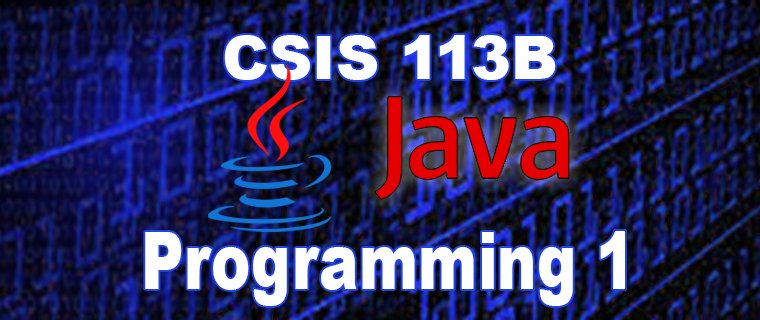Courses
Select a Course:

Course Description
This course introduces the principles of object-oriented programming using the Java programming language. Students will investigate and evaluate various programming design methodologies and apply them to programming problems in Java. Java features that will be covered include language syntax, class definitions, control structures, function definitions, and basic data structures. No prior programming experience required.
By successfully completing this course you will earn 3 units of college credit.
⇑ Table of Contents
Course Objectives
-
Analyze the basic structure of a Java application and be able to document, debug, compile, and run a simple application.
-
Create, name, and assign values to variables.
-
Use common control statements to implement flow control, looping, and exception handling.
-
Create methods (functions and subroutines) that can return values and take parameters.
-
Create, initialize, and use arrays to solve data storage and retrieval problems.
-
Explain the basic concepts and terminology of object-oriented programming.
-
Use common objects and references types.
-
Create common GUI components and modify their properties at both run time and design time.
-
Differentiate between object-oriented, structured, and functional programming methodologies.
-
Analyze and trace the execution of Java computer programs.
⇑ Table of Contents
Course Learning Outcomes
-
Prepare a program / algorithmic design for a simple straight-line problem.
-
Code and implement a Do/while loop construct for a given problem.
-
Code and implement a While loop construct for a given problem.
-
Code and implement a For loop construct for a given problem.
-
Create a robust test suite in support of a Java program design.
-
Implement a test module as part of the program design that will exercise a test suite.
-
Code and implement the for, while, and do while looping constructs.
-
Code and implement the if, if else, conditional, and switch decision constructs.
-
Develop algorithms in Java that implement arrays for storage and data retrieval.
-
Develop an understanding of the use of data in the creation of classes
-
Prepare a program that demonstrates the correct use of abstract data types.
⇑ Table of Contents